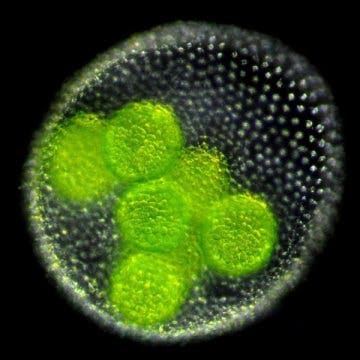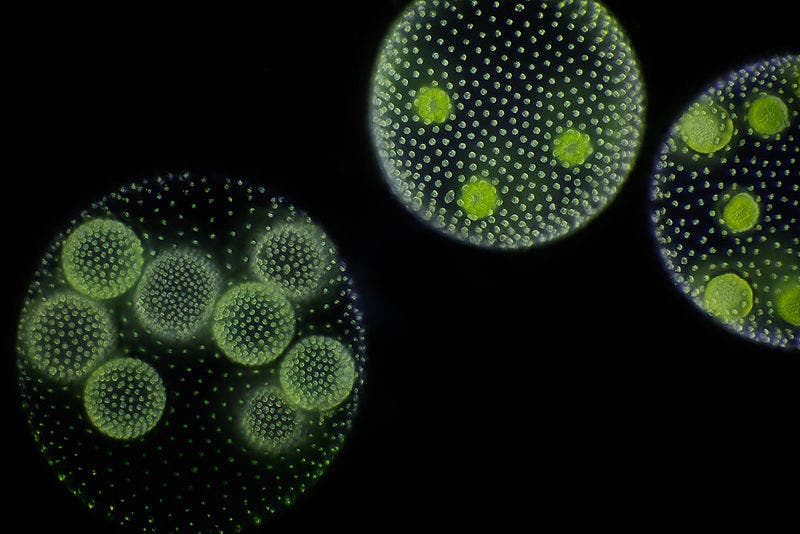Researchers from Cambridge have, for the first time, captured a 3D video of a living algal embryo turning itself inside out: from a sphere into a mushroom and into a sphere again. The results could help us better understand the process of gastrulation in animal embryos — which biologist Lewis Wolpert called “the most important event in your life.”
Biologists were studying the embryos of a green algae called Volvox, that forms spherical colonies of up to 50,000 cells. They live in a variety of freshwater habitats and interestingly, they demonstrated both individuality and working for the good of their colony, acting like one multicellular organism.
Using fluorescent microscopy, scientists were able to test a mathematical model of morphogenesis — the origin and development of an organism’s structure and form — and see how it behaves when it turns itself from a sphere to a mushroom shape and then back again.

The process is important not only for algae, but also for animals, as it is very similar to a process called gastrulation – a phase early in the embryonic development of most animals, during which the single-layered blastula is reorganized into a trilaminar (“three-layered”) structure known as the gastrula. Gastrulation is the result of complex cellular interactions, which makes it extremely difficult to quantify and understand in terms of raw numbers.
“Until now there was no quantitative mechanical understanding of whether those changes were sufficient to account for the observed embryo shapes, and existing studies by conventional microscopy were limited to two-dimensional sections and analyses of chemically fixed embryos, rendering comparisons with theory on the dynamics difficult,” said Professor Raymond E. Goldstein of the Department of Applied Mathematics and Theoretical Physics, who led the research.
Now is the first time scientists have been able to capture this process in 3D, which will also aid them in understanding gastrulation.

“It’s exciting to be able to finally visualise this intriguing process in 3D,” said Dr Stephanie Höhn, the paper’s lead author. “This simple organism may provide ground-breaking information to help us understand similar processes in many different types of animals.”
Journal Reference: Stephanie Höhn, Aurelia R. Honerkamp-Smith, Pierre A. Haas, Philipp Khuc Trong, and Raymond E. Goldstein. Phys. Rev. Lett. 114, 178101 – Published 27 April 2015 [Link]






